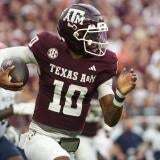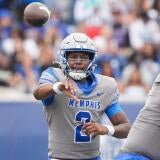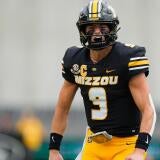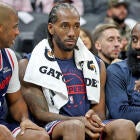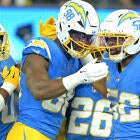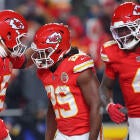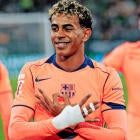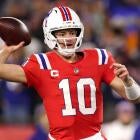For some top QBs spring break was no vacation
When Tajh Boyd showed up in California last month for his spring break to train with George Whitfield, the private QB coach got an an idea of why the Clemson star often throws the way he does.
When Tajh Boyd showed up in California last month for his spring break to train with George Whitfield, the private QB coach got an an idea of why the Clemson star often throws the way he does.
“Physically, he looks like a WILL ‘backer with those big shoulders and traps,” Whitfield says of the 6-1, 225-pounder. “Sometimes with guys like that, they tend to wear it like, 'This is who I am.' So he wouldn't really step into the throw because he felt like he didn't need to. He'd just gun it.”
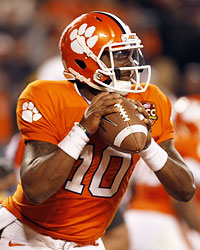 To remedy that, Whitfield worked on Boyd's footwork and base, while incorporating more of the Tiger’s lower body into his delivery. The coach rigged a bungee chord to the front of Boyd and would pull him forward to prompt the QB to stride toward his target. If Boyd didn't, Whitfield says, the Clemson star couldn't help but fall forward.
To remedy that, Whitfield worked on Boyd's footwork and base, while incorporating more of the Tiger’s lower body into his delivery. The coach rigged a bungee chord to the front of Boyd and would pull him forward to prompt the QB to stride toward his target. If Boyd didn't, Whitfield says, the Clemson star couldn't help but fall forward.
"His arm is huge," says Whitfield, adding that because of that Boyd is "less inclined to be detailed with his legs." Guys who aren't as physically impressive or blessed with such a powerful arm tend to do a better job of incorporating their entire body into their delivery to maximize what they do have. "I keep telling him to 'work like you're 5-11, 185.'"
It also helped that Boyd got a chance that week up at Stanford to observe and work with Andrew Luck and Oklahoma's Landry Jones, a guy who has thrown 93 touchdowns in his three seasons as the Sooners' starter.
If Boyd gets much better in Year II as a starting QB -- and you figure he probably will -- the Tigers offense should be scary, especially since Sammy Watkins and a dynamic group of young receivers should be poised for a big jump themselves now that they too have some added seasoning. In 2011, Boyd threw for almost 4,000 yards to go with 33 TDs and just 12 INTs. But there is still some aspects of his game that need plenty of refinement, and Boyd was well aware of them.
Jones, too, wanted to develop his pocket presence, and also get better at being able to throw with crowds around his feet and become more adept at evading pressure coming through the line-of-scrimmage. In addition, the Sooner standout had the opposite issue of Boyd mechanically, Whitfield said. Jones needed to get better at driving off his back foot to gain more "horsepower."
Whether defenses will be ready for them in 2012 is a whole other story.


